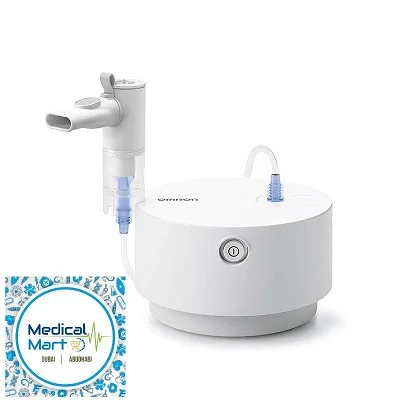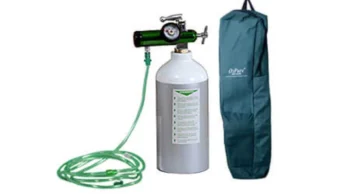Caring for a patient at home who has difficulty breathing can be a daunting task, but with the right knowledge and tools, it can be managed effectively. Breathing difficulties can arise from various conditions, such as chronic obstructive pulmonary disease (COPD), asthma, heart failure, pneumonia, or even severe anxiety. Here is a comprehensive guide on how to care for such patients at home, focusing on practical steps, supportive measures, and when to seek medical help.

Understanding the Causes
First and foremost, understanding the underlying cause of the patient’s breathing difficulty is crucial. Breathing issues can be caused by:
1. Chronic Conditions: COPD, asthma, and heart diseases.
2. Acute Infections: Pneumonia or bronchitis.
3. Allergic Reactions: Anaphylaxis or severe allergic reactions.
4. Anxiety and Panic Attacks: Psychological factors can lead to hyperventilation and breathlessness.
5. Environmental Factors: Poor air quality, smoking, and exposure to allergens.
Immediate Actions
When a patient experiences difficulty breathing, quick action can make a significant difference:
1. Stay Calm: Keep the environment calm to avoid increasing the patient’s anxiety, which can exacerbate breathing problems.
2. Positioning: Help the patient into a comfortable position. Sitting upright or propping them up with pillows can often help ease breathing.
3. Breathing Techniques: Encourage the patient to practice deep breathing exercises. Pursed-lip breathing (inhaling through the nose and exhaling slowly through pursed lips) can help improve oxygen intake.
4. Use of Inhalers or Nebulizers: If the patient has prescribed medications, ensure they take them as directed. Inhalers and nebulizers can provide quick relief by delivering medication directly to the lungs.
Long-term Management
For chronic conditions, a long-term management plan is essential:
1. Medication Adherence: Ensure the patient takes their medications regularly as prescribed. This may include bronchodilators, steroids, or other maintenance medications.
2. Regular Monitoring: Keep track of the patient’s breathing patterns, oxygen levels (using a pulse oximeter), and any changes in their condition. Note any triggers that worsen their symptoms.
3. Lifestyle Modifications: Encourage the patient to avoid smoking, limit exposure to pollutants, and maintain a healthy diet. Weight management can also significantly impact breathing efficiency.
4. Exercise: Gentle, regular exercise can improve lung capacity and overall cardiovascular health. Activities like walking, swimming, or yoga can be beneficial.
5. Vaccinations: Ensure the patient is up-to-date with vaccinations, particularly for influenza and pneumonia, to prevent respiratory infections.
Creating a Supportive Environment
A conducive home environment is critical for the well-being of a patient with breathing difficulties:
1. Air Quality: Keep the home free from dust, mold, and allergens. Use air purifiers if necessary and ensure good ventilation.
2. Temperature and Humidity: Maintain a comfortable temperature and humidity level. Dry air can irritate the respiratory tract, so using a humidifier can help.
3. Safety Measures: Install handrails and avoid clutter to prevent falls, which can be particularly dangerous for patients who might need to conserve their energy for breathing.
Emotional and Psychological Support
Breathing difficulties can be frightening and emotionally draining for both the patient and their caregivers. Providing emotional support is as important as managing physical symptoms:
1. Communication: Encourage open communication about their fears and concerns. Listening empathetically can alleviate some of their anxiety.
2. Counseling: Consider professional counseling or therapy, particularly if the patient is dealing with anxiety or depression.
3. Support Groups: Connecting with others who have similar conditions can provide comfort and practical advice.
Emergency Situations
Despite the best care, emergencies can occur. Knowing when to seek medical help is crucial:
1. Severe Shortness of Breath: If the patient cannot catch their breath or their breathing is rapid and shallow, seek emergency medical assistance.
2. Chest Pain: Chest pain, especially if accompanied by breathlessness, could indicate a heart attack or pulmonary embolism.
3. Bluish Skin or Lips: Cyanosis, a bluish tint to the skin or lips, indicates a lack of oxygen and requires immediate attention.
4. Confusion or Drowsiness: Changes in mental state can be a sign of low oxygen levels or other serious conditions.
Utilizing Healthcare Resources
Leverage available healthcare resources to provide the best care for the patient:
1. Telemedicine: Use telehealth services for regular check-ups and consultations without needing to visit the doctor’s office.
2. Home Healthcare Services: Consider hiring a home healthcare nurse or aide for more intensive care or to assist with medical equipment.
3. Educational Resources: Stay informed about the patient’s condition through reputable sources like healthcare providers, support organizations, and online resources.
Equipment and Tools
Several tools and pieces of equipment can aid in managing breathing difficulties at home:
1. Pulse Oximeter: To monitor oxygen levels.
2. Inhalers and Nebulizers: For medication administration.
3. Humidifier: To maintain optimal humidity levels.
4. CPAP/BiPAP Machines: For patients with sleep apnea or severe respiratory issues.
5. Emergency Medications: Ensure quick access to emergency medications such as rescue inhalers or epinephrine for allergic reactions.







